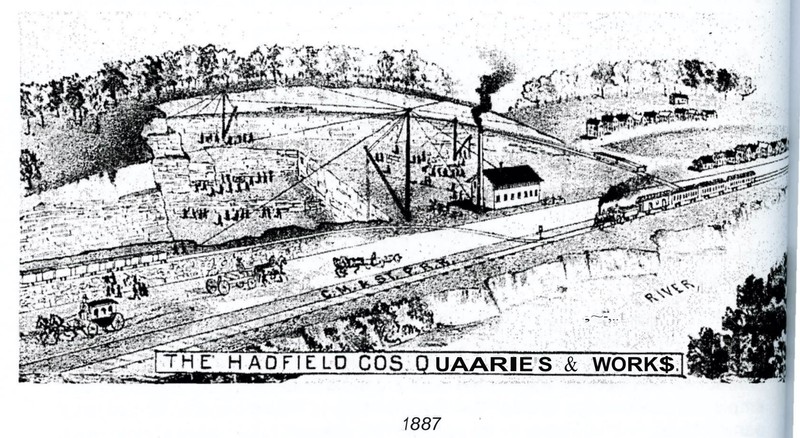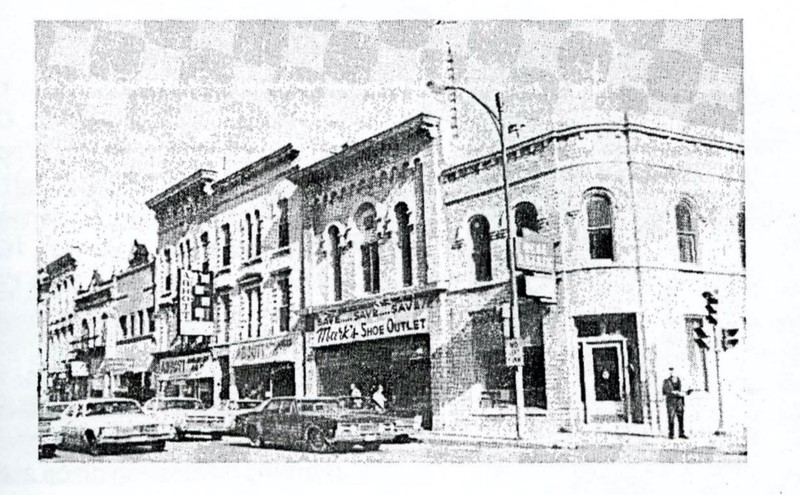Waukesha Quarries
Introduction
Text-to-speech Audio
Images
Hadfield Co. Quarries

Corner of Main and Clinton, those familiar with downtown Waukesha will recognize the building that became People's Park

Old Courthouse

Backstory and Context
Text-to-speech Audio
Just looking around town, it's clear that limestone was a building material of choice in the 19th century. What's less known is that, when burned in a kiln, limestone becomes lime, which is used in fertilizer, glass, mortar, bleach, and many other products. With so many applications limestone and lime were valuable resources that Waukesha had in abundance. This is one of the reasons why several of the buildings on this tour are connected to Waukesha Quarries. The wealth of resources and the willingness to use them started an industry that would have easy access to far off customers, thanks to the railroads, and would provide jobs in Waukesha county throughout the 19th and 20th centuries.
Massachusetts-born abolitionist Lyman Goodnow opened the first known quarry in what would become Waukesha County in the spring of 1840, having leased land from Morris D. Cutler (for more information, see the Cutler House entry in this tour. In 1856 the Barnes brothers bought a nine-acre stone quarry from T.D. Cook. This quarry was located where the Carroll athletic fields currently stand. Calvin C. Barnes built his home, using Waukesha limestone, on the hill nearby to look over the quarry. This house would eventually come to be known as the Bryant house. By the late 1850’s there were two quarries near Carroll College, the Cook and Bacon Quarry to the north, and the Waukesha Stone Co. (Owned by the Barnes) to the immediate west. Most of the early quarries sent their product to Milwaukee which had more trade opportunities due to its proximity to the lake.
Waukesha was fortunate to be situated with Milwaukee to the east and Madison to the west. So, when the railroads were established to connect the two, Waukesha gained two customers for their limestone products. The railroads also brought the limestone market to Chicago.
In 1871 both quarries in the Village of Waukesha belonged to Hadfield & Co. Following the Great Chicago Fire in October of 1871, Hadfield limestone was in high demand. This made the Hadfields the most prominent lime and limestone producers in Waukesha County. Members of the Carroll community owe a great deal to Hadfield & Co. since it was limestone from the Hadfield quarries that was used to build Main Hall. While its uncertain which quarry supplied most of the stone, it’s probable that it was the Hadfield quarry in the Town of Pewaukee, north of the Village of Waukesha (that area is now the site of Waukesha Lime & Stone Co.).
Sources
Loerke, Jean Penn, "Waukesha Limestone: The Quarries, Kilns and the Buildings," Waukesha County Historical Museum, 1978.
Goodnow, Lyman. Recollection. Manuscript (c. 1880). University of Wisconsin Madison Digital Collections http://digital.library.wisc.edu/1711.dl/WI.Goodnow2e
Loerke, Jean Penn, "Waukesha Limestone: The Quarries, Kilns and the Buildings," Waukesha County Historical Museum, 1978.
Loerke, Jean Penn, "Waukesha Limestone: The Quarries, Kilns and the Buildings," Waukesha County Historical Museum, 1978.
Loerke, Jean Penn, "Waukesha Limestone: The Quarries, Kilns and the Buildings," Waukesha County Historical Museum, 1978.
